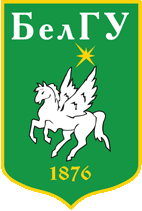Impact of organotin compounds on the growth of epidermoid Lewis carcinoma
DOI:
https://doi.org/10.3897/rrpharmacology.7.71455Аннотация
Introduction: Search for new compounds with a broad antitumor and antimetastatic potency due to multiple targeting remains important in medicinal chemistry, pharmacology and oncology. We report the efficacy of hybrid organotin agents bis-(3,5-di-tert-butyl-4-hydroxyphenylthiolate) dimethyltin (Ме3) and (3,5-di-tert-butyl-4-hydroxyphenylthiolate) triphenyltin (Ме5).
Materials and methods: The compounds were administered to mice bearing the spontaneously metastatic epidermoid Lewis lung carcinoma (LLC). The efficacy of the treatment was evaluated by mean life span, percentage of tumor growth inhibition, number of lung metastases, frequency of metastasis, tumor weight 21 days after tumor cell inoculation, and a degree of lung damage according to the method of D. Tarin and J.E. Price.
Results and discussion: For new organotin compounds containing an antioxidant protective fragment of 2,6-di-tert-butylphenol, moderate antitumor and pronounced antimetastatic effects were revealed in the Lewis model of epidermoid lung carcinoma; more active for Me5. Some features of the development of the process of metastasis were recorded with the introduction of various doses of hybrid organotin compounds.
Conclusion: Substances Ме3 and Ме5 possess specific activity on the model under investigation, which allows one to suggest these organotins as promising series of antitumor and antimetastatic agents with multiple targeting mode of action.
 Русский
Русский
 English
English

